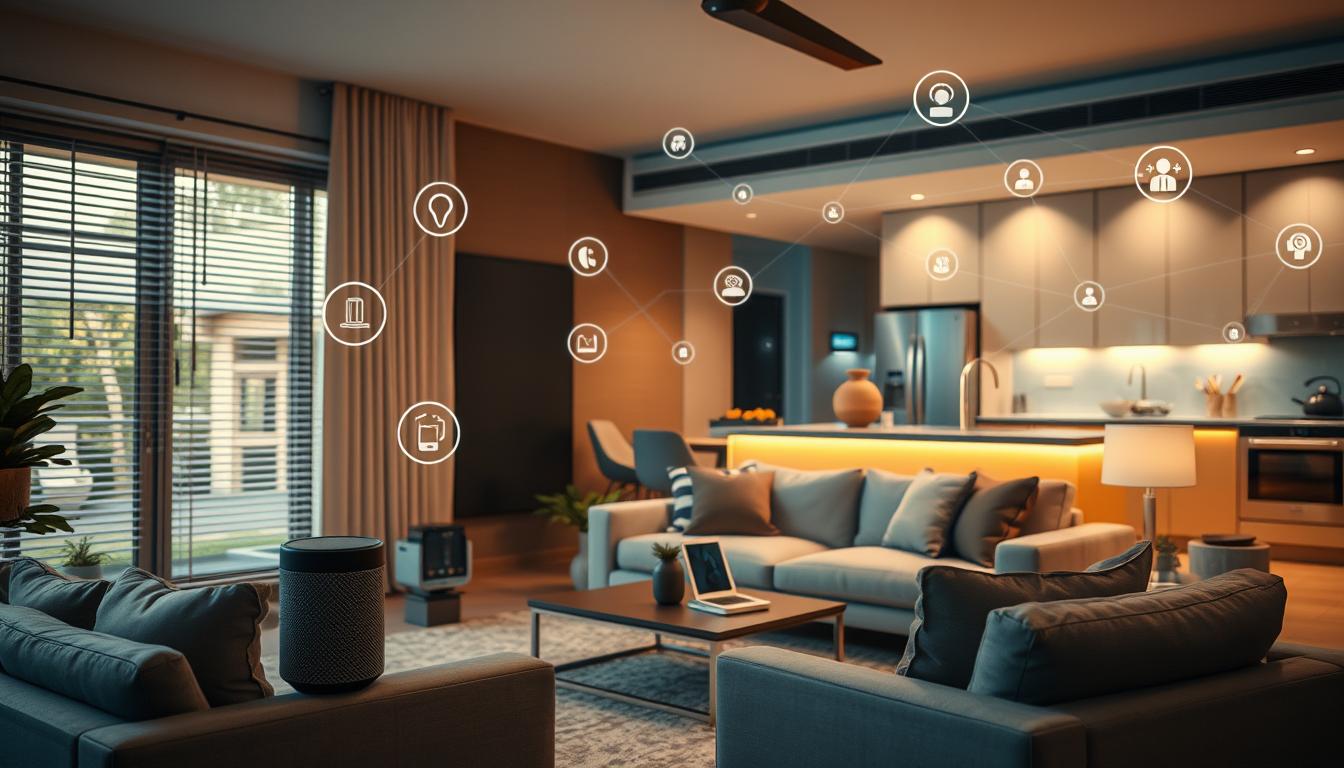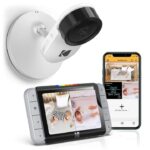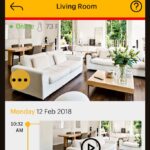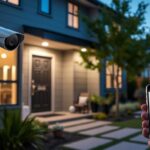The world of home automation is changing fast. It’s making homes smarter and more connected. With smart home tech, you can control devices from anywhere using the internet and your phone.
This tech helps with everyday tasks. It makes homes more comfortable, convenient, and efficient.
A smart home has three main parts: a hub, sensors, and actuators. They talk to each other using Wi-Fi, Bluetooth, or ZigBee. This tech saves energy, makes homes safer, and lets you customize your space.
Contents
What is Smart Home Automation and Why It Matters?
Smart home automation makes your home smart. It lets you control and watch your home from anywhere. It uses a hub, sensors, and actuators.
The hub is the smart home’s brain. It talks to apps, devices, and you. Sensors find things like temperature and motion. Actuators do things when the hub tells them to.
Benefits of Home Automation
Smart homes are convenient, save energy, and money. You can control lights and temperature from afar. This saves energy and cuts bills. Smart homes also keep you safe with cameras and alarms.
Levels of Smart Home Control
Home automation has three levels: monitoring, control, and automation. Monitoring lets you see what’s happening at home. Control lets you change things from afar. Automation makes things happen on their own, making life easier.
The smart home market is growing fast. The future of home automation looks bright. It will change how we live and work.

“Smart home technology has the potential to revolutionize the way we live, work, and interact with our living spaces. By seamlessly integrating various systems and devices, homeowners can enjoy unparalleled convenience, energy savings, and enhanced security.”
Smart Home Basics: Essential Components for Beginners
Starting with smart home automation is easy. Beginners should look at smart thermostats, lighting, security cameras, and voice assistants. These devices are the first step to a smart home.
Smart thermostats, like the Nest series, control your home’s temperature. They save energy and keep your home comfy. Smart lights, such as Philips Hue or LIFX, save energy and can be controlled from anywhere.
Security cameras, like the Arlo Pro 4 Spotlight Camera ($124), keep your home safe. They let you watch live footage and get alerts on your phone.
Voice assistants, like Amazon Alexa and Google Assistant, control your smart home. They can do many things with just your voice. The Google Nest Hub is great for voice control and smart home use.
Adding these basics to your home is easy. They make your home more convenient, save energy, and keep it safe. As you get used to them, you can add more to your smart home.
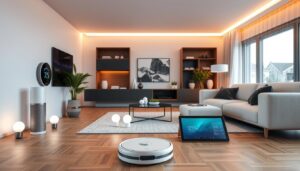
Choosing the Right Smart Hub for Your Home
Choosing the right smart home hub is key today. Over the years, smart home hubs have changed a lot. Now, we have two main types: multi-protocol hubs and ecosystem hubs.
Multi-protocol hubs are flexible. They use radios like Zigbee, Z-Wave, and Thread. They work with many platforms and ecosystems. Ecosystem hubs, like Amazon Echo, Google Home, and Apple Home, are newer. They keep you in one ecosystem and use specific radios.
Popular Smart Hub Platforms
Google Home and Amazon Echo are well-known. They are smart speakers and hubs. They use Google Assistant and Alexa and work with many devices.
Samsung SmartThings is another big name. It offers advanced automation options.
Hub vs. No Hub Setup Options
Choosing between a hub and no hub depends on your smart devices. Hubs are great for managing many devices from different makers. They act as a central control point.
If you have fewer devices, a no-hub setup might work. Devices can connect directly to the internet or through bridges or gateways.
Compatibility Considerations
When picking a smart home hub, check if it works with your devices. Look at the manufacturer’s website for compatible devices. The Matter standard is also important. It helps devices work together across platforms.
For advanced users, Home Assistant and Hubitat are good choices. They offer wide interoperability and customization. But, they need technical skills to set up and keep running.
Essential Features for Smart Home Control
Smart home automation is getting better. Homeowners want features that control their homes well. They can manage lights, thermostats, and more with apps on their phones.
Voice commands, like Amazon Alexa or Google Assistant, make controlling your home easy. You don’t need to use your hands. This makes daily life easier.
Customizable automation is key. It lets you set up routines that fit your life. For example, you can set the thermostat and dim lights at the same time every day.
User roles add security and flexibility. They let you decide who can control what in your home. This is great for keeping your home safe and organized.
Features like smart room control and personal analytics make your home smarter. They let you manage devices in different rooms and track energy use. This helps you save money and be more eco-friendly.
